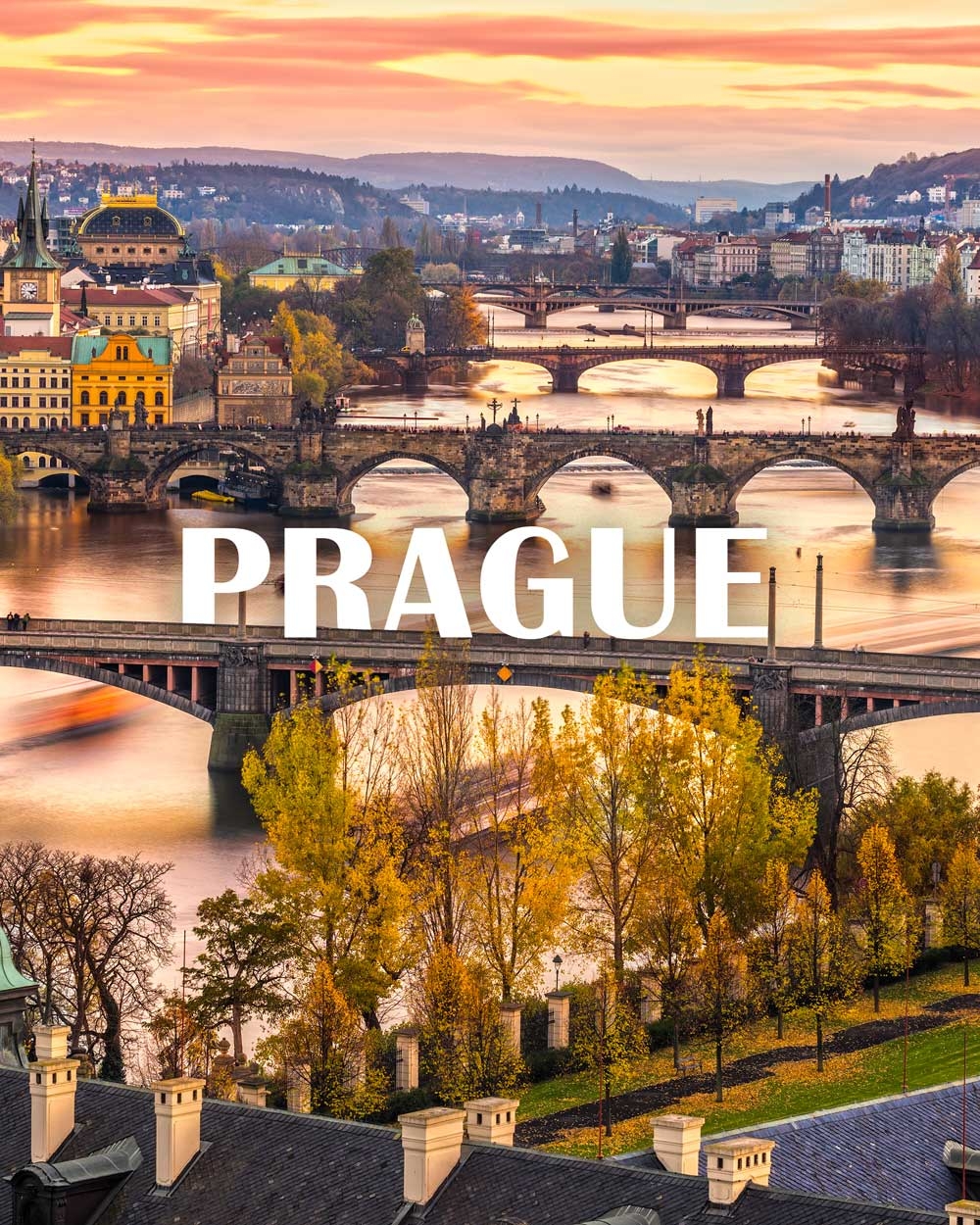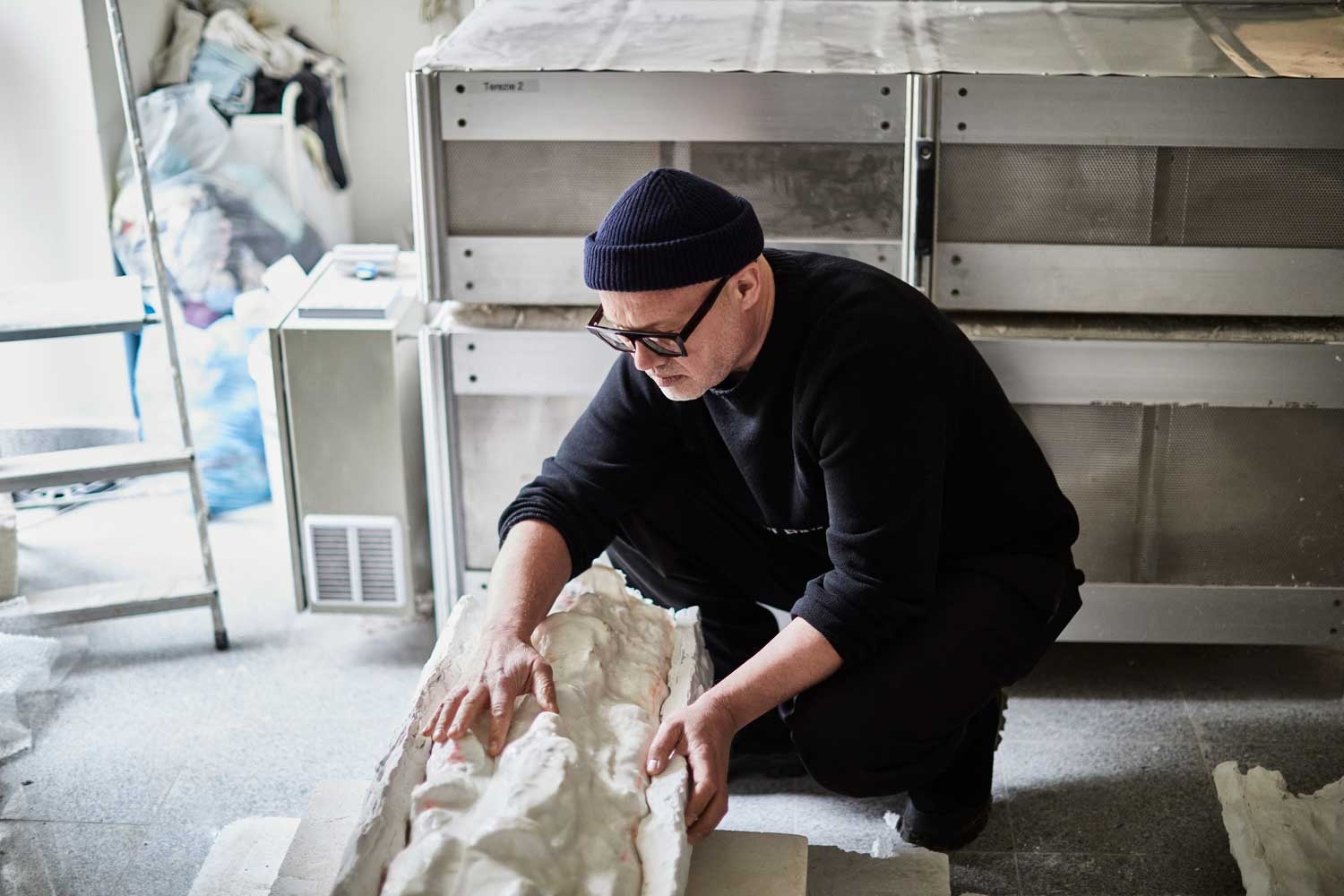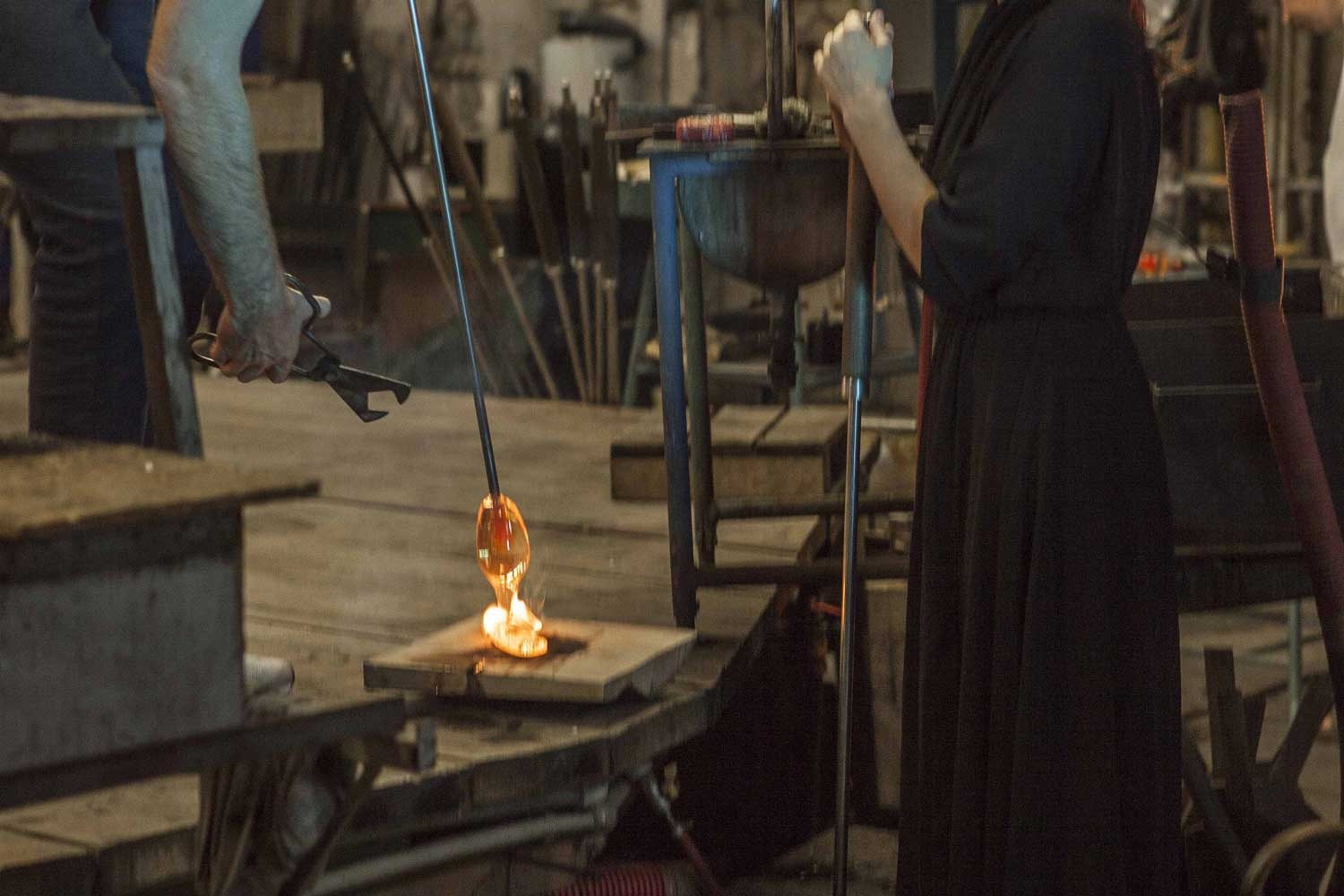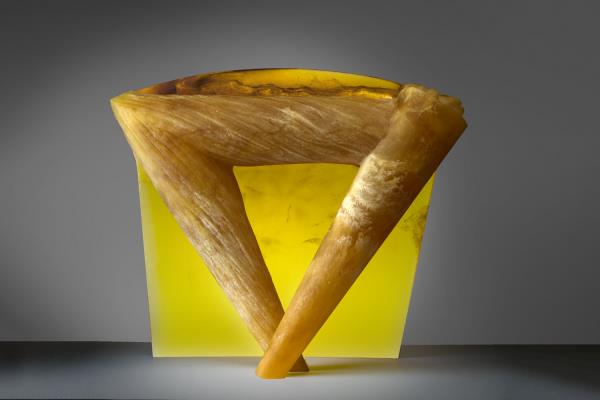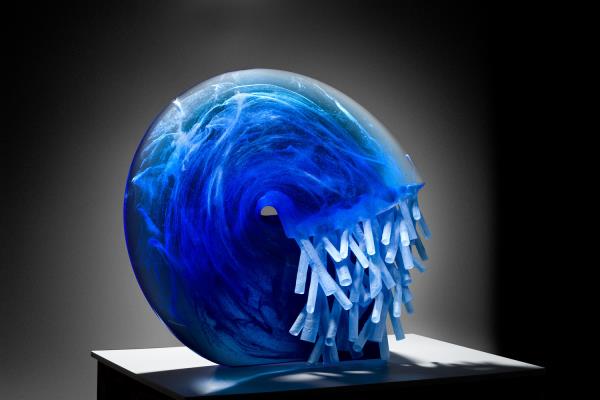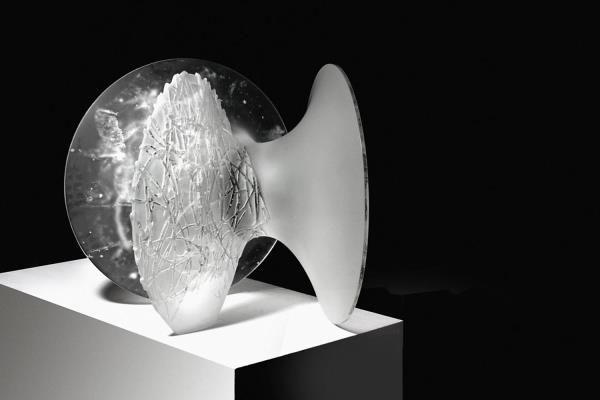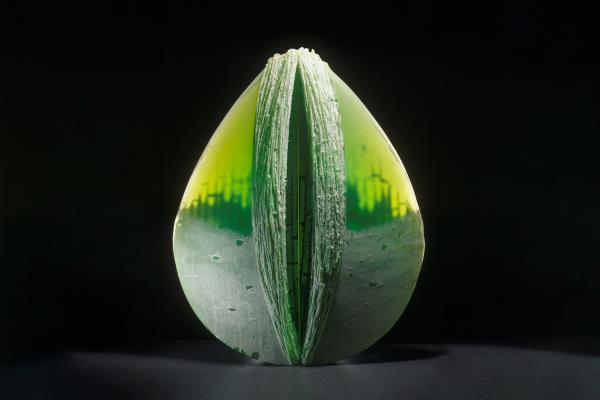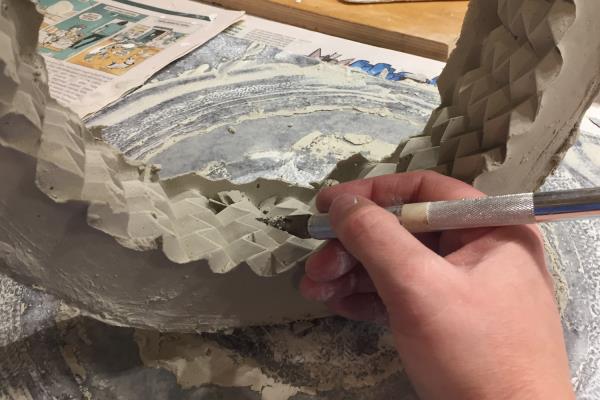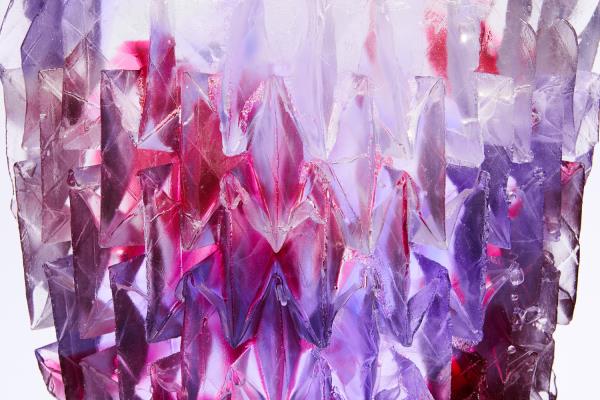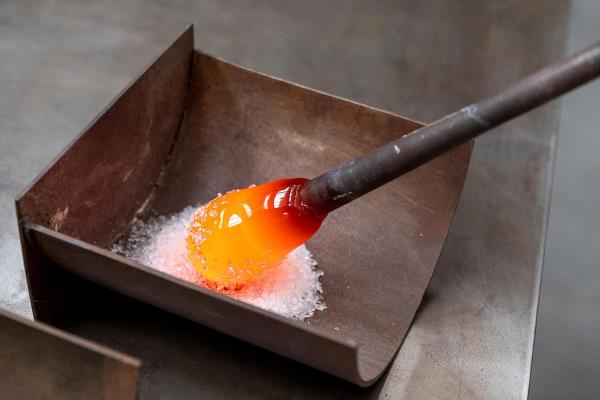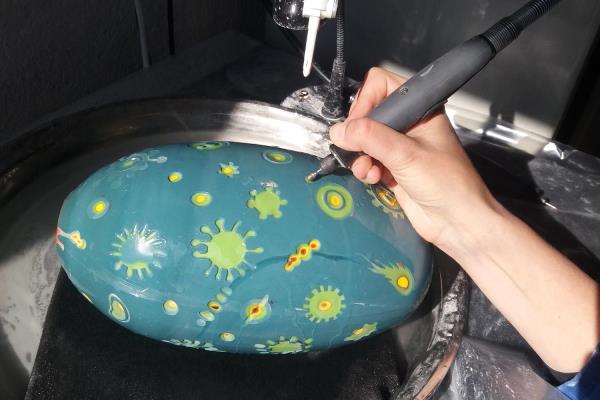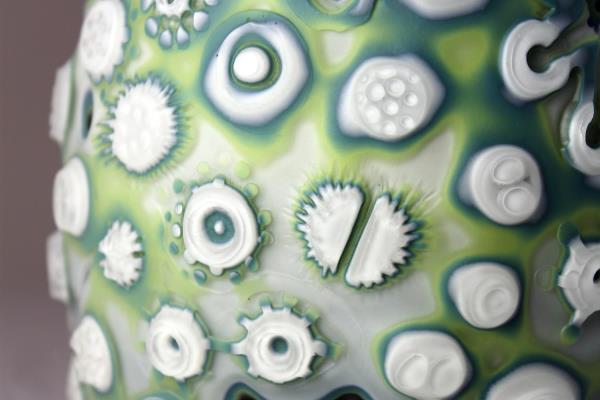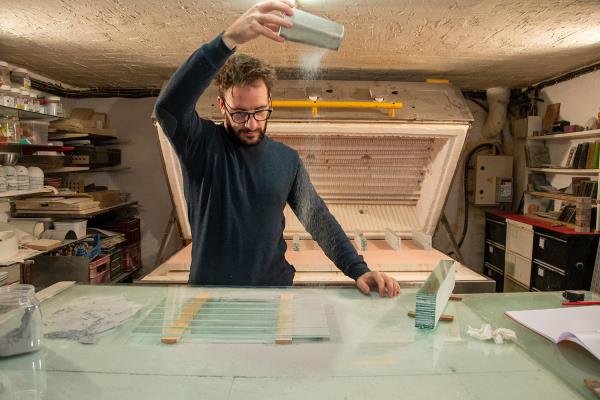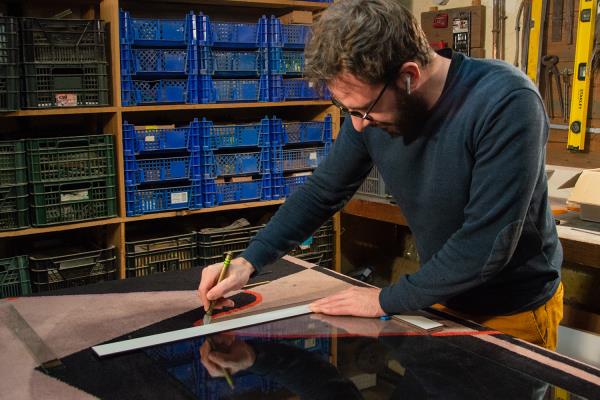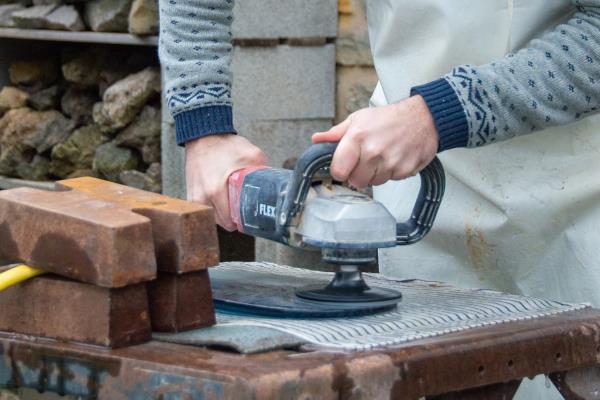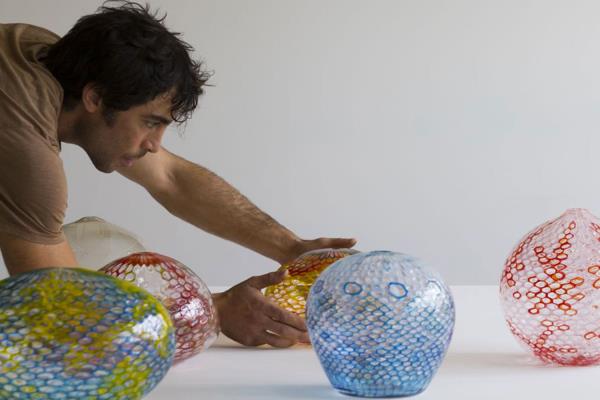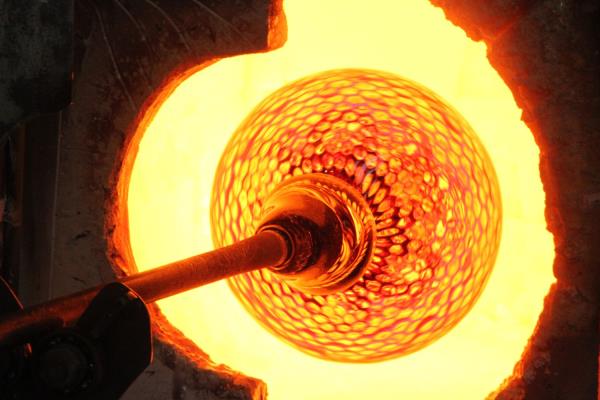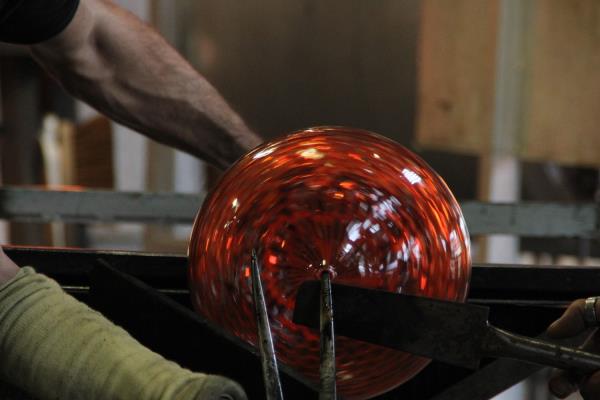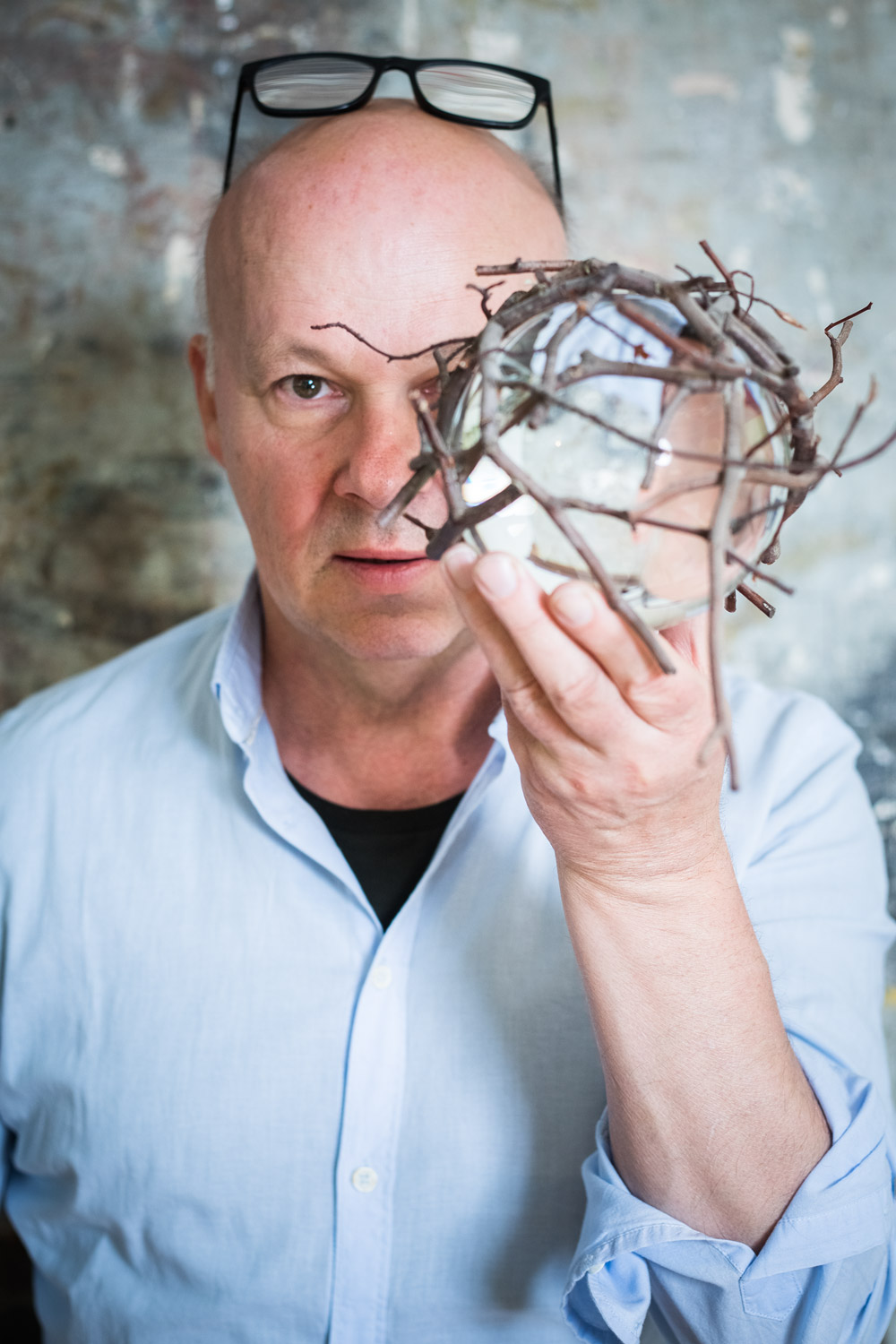


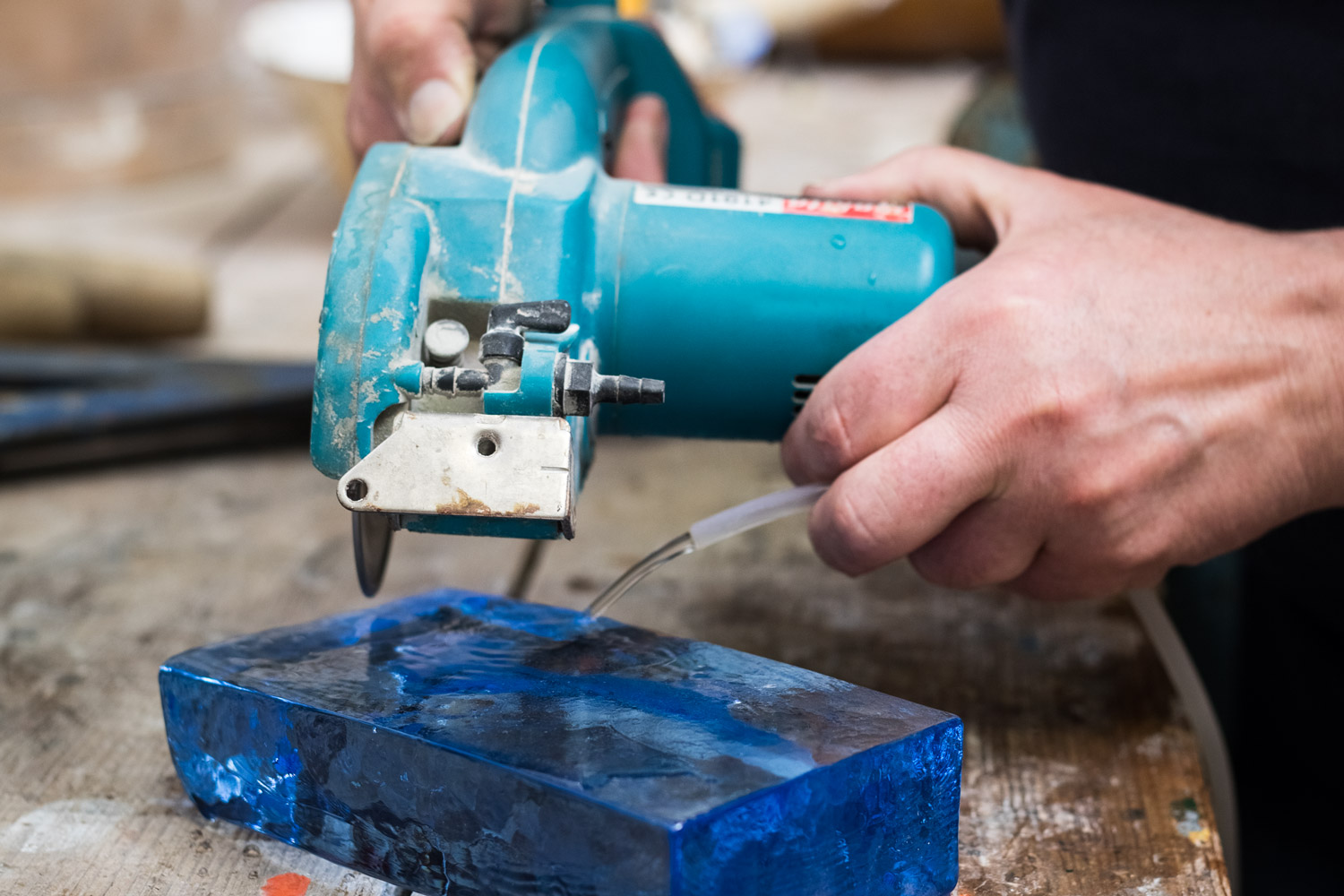

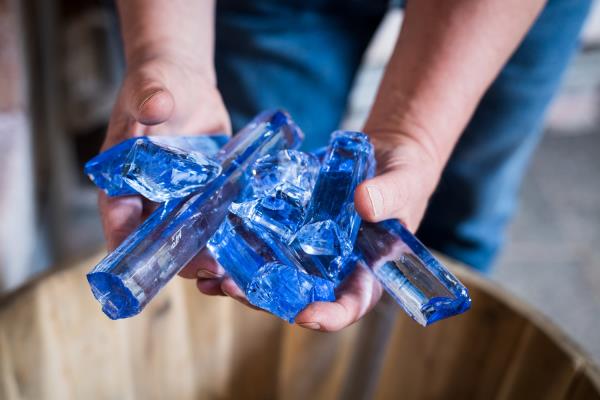


Impressions locked in glass
- Ivan creates monumental glass sculptures
- He seeks to encapsulate his experiences within his pieces
- He looks for a balance between opposing natural sensations
Ivan Mareš trained under the legendary professor Libensky. It is therefore no surprise that monumental molten glass objects are dominant in his work. Ivan´s production is not extensive, but more serious and artistically convincing. Ideas hatch in the silence of nature, under starry night skies with their strange sounds and the rustle of moth wings. These impressions and experiences are then locked in the heart of the sculpture, seen through a peek inside a polished, transparent spot. For a while the viewer can see the bustle inside, but soon it vanishes in the depth of the substance, disappearing in myriads of bubbles. Ivan breaks the technological limits of mould melting with each new piece and has the skills to execute large-scale artworks requiring upto several months of work.
Interview
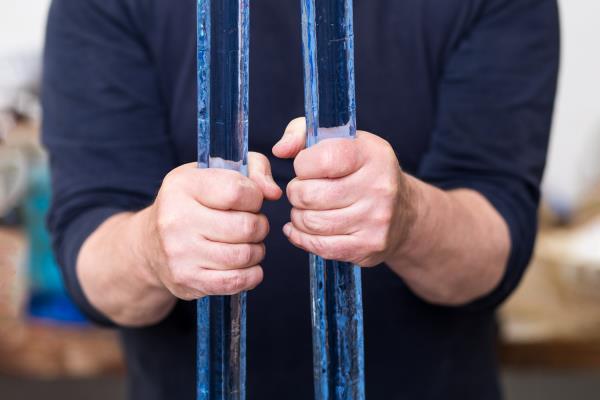
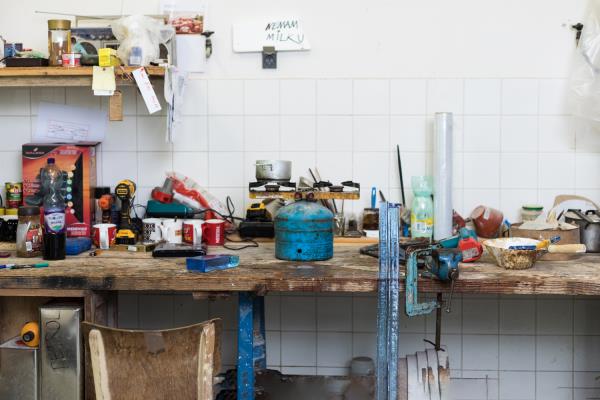
- What problems arise making large scale sculptures?
- Even though I always make small scale trials with two types of raw glass I want to combine, the final melting can turn out incompatible. The disaster is that you only discover the inner tension whilst grinding the sculpture. Another disaster is when the supply of electricity is cut during the cooling process.
- Why did you choose a remote place for your workshop?
- I used to make sculptures in factories, but I wanted to experiment myself and learn from my own mistakes. So, I rebuilt a 200 year-old pothouse. Where billiards were played is my atelier, in the basement is my modelling studio and in the beer-cellar is the melting area.
- What are your sources of inspiration?
- Perfect forms such as honeycomb, a snail shell or soft organic materials like branches or hay. Also everyday items rope or coffee pots, I enhance by enlarging the scale and transposing it into heavy lead glass.
- Why do you work with contrasts?
- I like to examine the contrasts between perfect transparency and the various degrees of opaqueness, between the regularity of a cut grid and the randomness of the inner structures. The shades of colour gradually change with the thickness of the glass mass and the amount of light.
Ivan Mareš is an expert artisan: he began his career in 1984
Where
Ivan Mareš
Find Ivan Mareš in the itinerary
